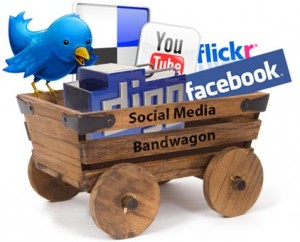 Last week, Gartner claimed that half of enterprises are wasting money on social media. But Indian CIOs who are bullish on the social media space vehemently defend their digital marketing spends by claiming that it does indeed link back to measurable business outcomes.
Last week, Gartner claimed that half of enterprises are wasting money on social media. But Indian CIOs who are bullish on the social media space vehemently defend their digital marketing spends by claiming that it does indeed link back to measurable business outcomes.
“Having a million likes on your Facebook page or a million followers on Twitter may not make a social media campaign successful. It needs to translate into a revenue mechanism that affects the profitability of the business,” said Ranendra Dutta,VP-IT, Sabmiller India.
“You need to support your social media activity with secondary market research data of sales revenue, then you might be able to draw a co-relation, but it is tough to do,” he added.
Many like Dutta however agreed that social media should be measured not as a standalone activity, rather as part of a larger digital marketing strategy. “In a marketing campaign, do you calculate the ROI of the collaterals?” asked V.S. Parthasarathy, group CIO, Mahindra & Mahindra.
Mahindra and Mahindra’s digital marketing strategy has helped the company bring down transaction costs, build valuable leads of potential customers and increase focus of customer expectation. In fact, Mahindra and Mahindra’s digital marketing activities has won laurels at a Harvard Social media Conference.
Companies today are spending on acquiring expertise in social and digital marketing as well as in tool that is helping them analyse that data. While only a few have started porting that data into their BI platforms, CRM activities like lead generation, crowd sourcing have started to bring in visible effects.
Companies like Mahindra & Mahindra and Sabmiller are extremely bullish in the social media space and have linked it to their larger digital marketing strategy. Sabmiller for example is running a campaign called ‘the Coolest Job’ on Facebook to promote a relatively unknown malt alcohol-beverage brand Miller High Life. The page received 37,000 job submissions and gained over 100,000 new Facebook India fans (from zero).
Mahindra & Mahindra, on the other hand, has been able to not only boost sales by drawing people into their showrooms, but also cut down their transaction costs. “Social media eliminates the cost of a third-party recommendation agency. Take Mahindra Holidays, for example. Today people customise their own holidays and follow reviews of other travelers to make their decisions. Social media has automated business processes that otherwise would’ve been a cost to the company,” said Parthasarthy.
BI tools in the market have yet to reach a sophistication level wherein they can be used beyond a reporting tool, and understand the underlying emotions and sentimental value of Tweets and Facebook posts. However, social media front runners like TATA Docomo and Hungama.com are studying the online behavior of their customers that has helped them in dishing out targeted content.
“We’ve invested significantly in software as well as hardware to study the online behavior of our customers, on our site as well as various social media platforms. Our analytics tools help us understand where our customers are coming from, what are they browsing and what songs they are downloading, helping us service them better? I can directly co-relate this with my revenue,” said Manan Chhatrapati, CTO at Hungama.com.
Tata Docomo has delivered over two billion message impressions per month on Facebook alone, and is currently the second highest ranked Indian media on Facebook, according to Brands Going Social. Ashish Pachory, head IT, Tata Teleservices has deployed web-crawler and associated tools to gain deeper insights into customer sentiments on Social Media.
“The available information is analysed using social media analytics to intelligently identify and resolve customer pain areas. The information also helps us in market analyses of products launched by Tata DOCOMO and other telecom players. Most importantly, it helps us understand behaviors and trends to do targeted market launches and arrest any negative sentiment before it hurts our customers or our business,” he said.
“It aids timely planning and prioritisation of product launches, while also helping in reduction of customer complaints, thus helping us increase our revenues quickly,” he added.
Social media is an open medium, and more importantly it’s free. “There very well might be a day when these sites will start charging companies who are using this medium to connect with their customers and advertise their products. It’s about time we started measuring the returns because the cost of not being on social media is way too high,” concluded Dutta.





